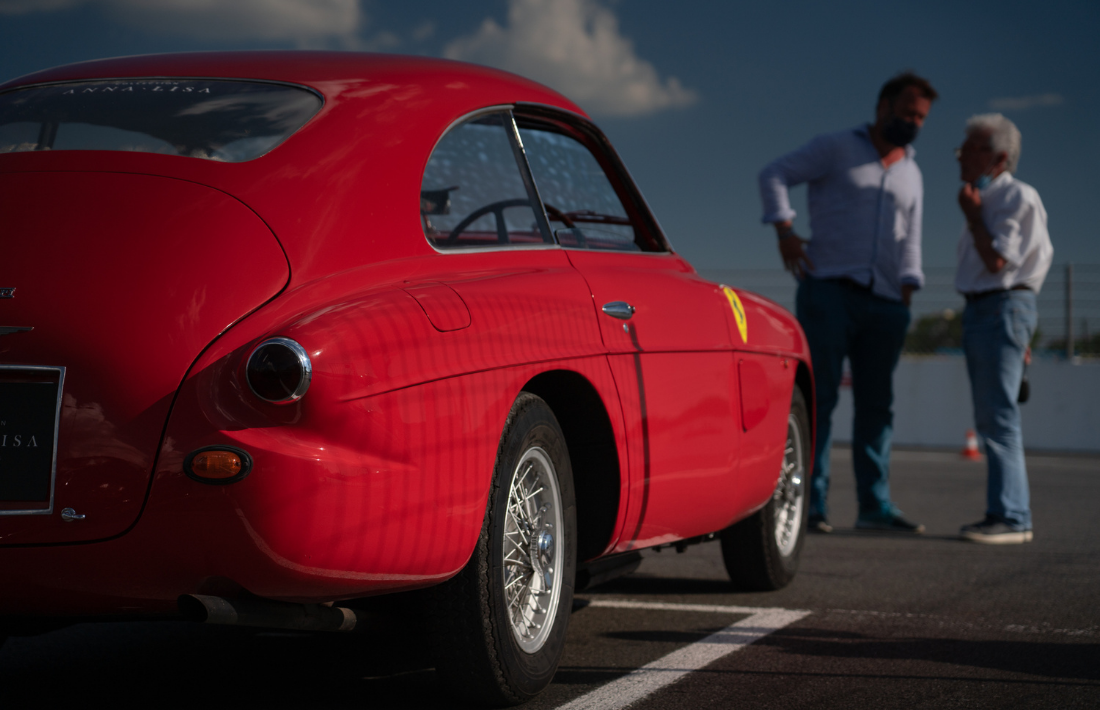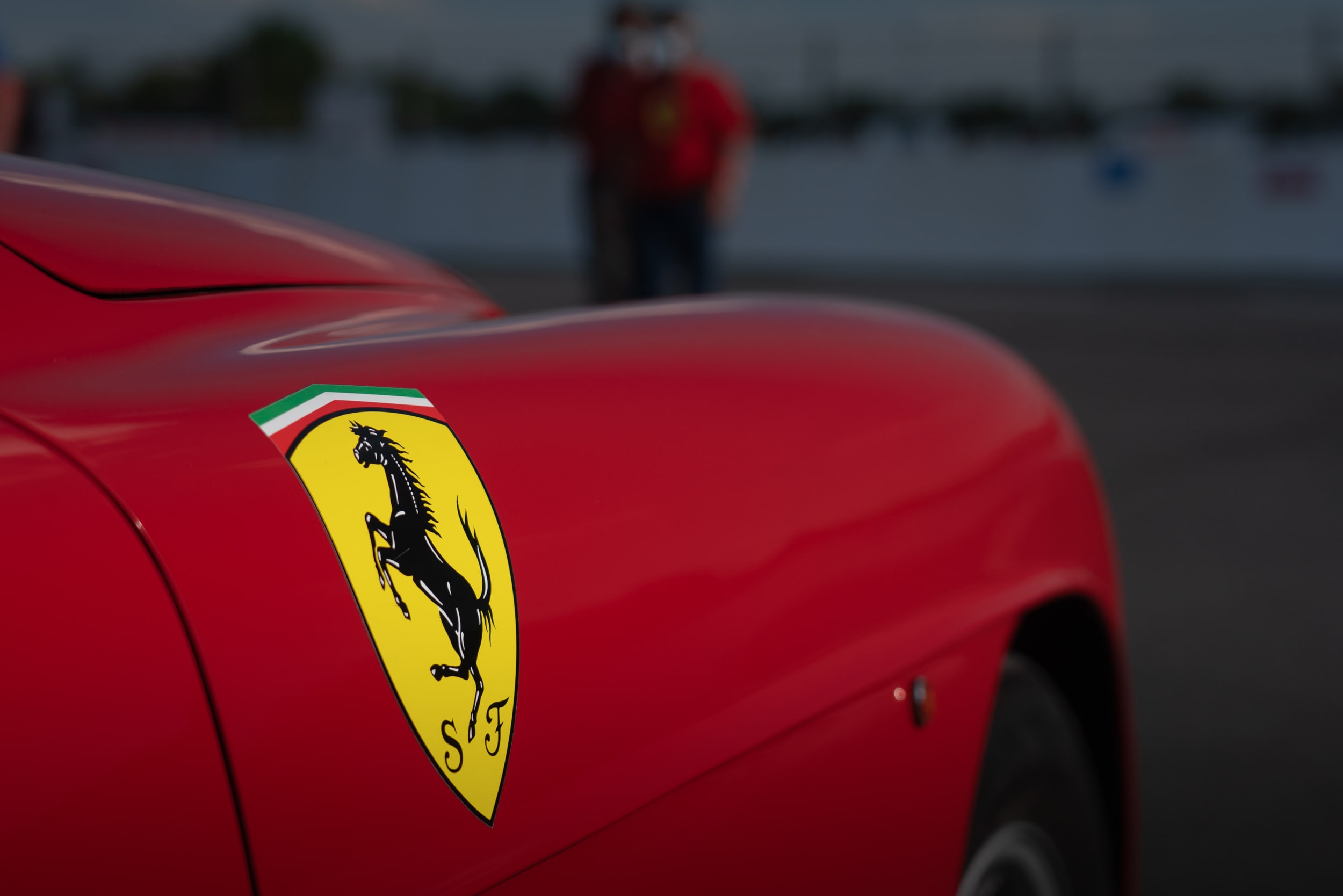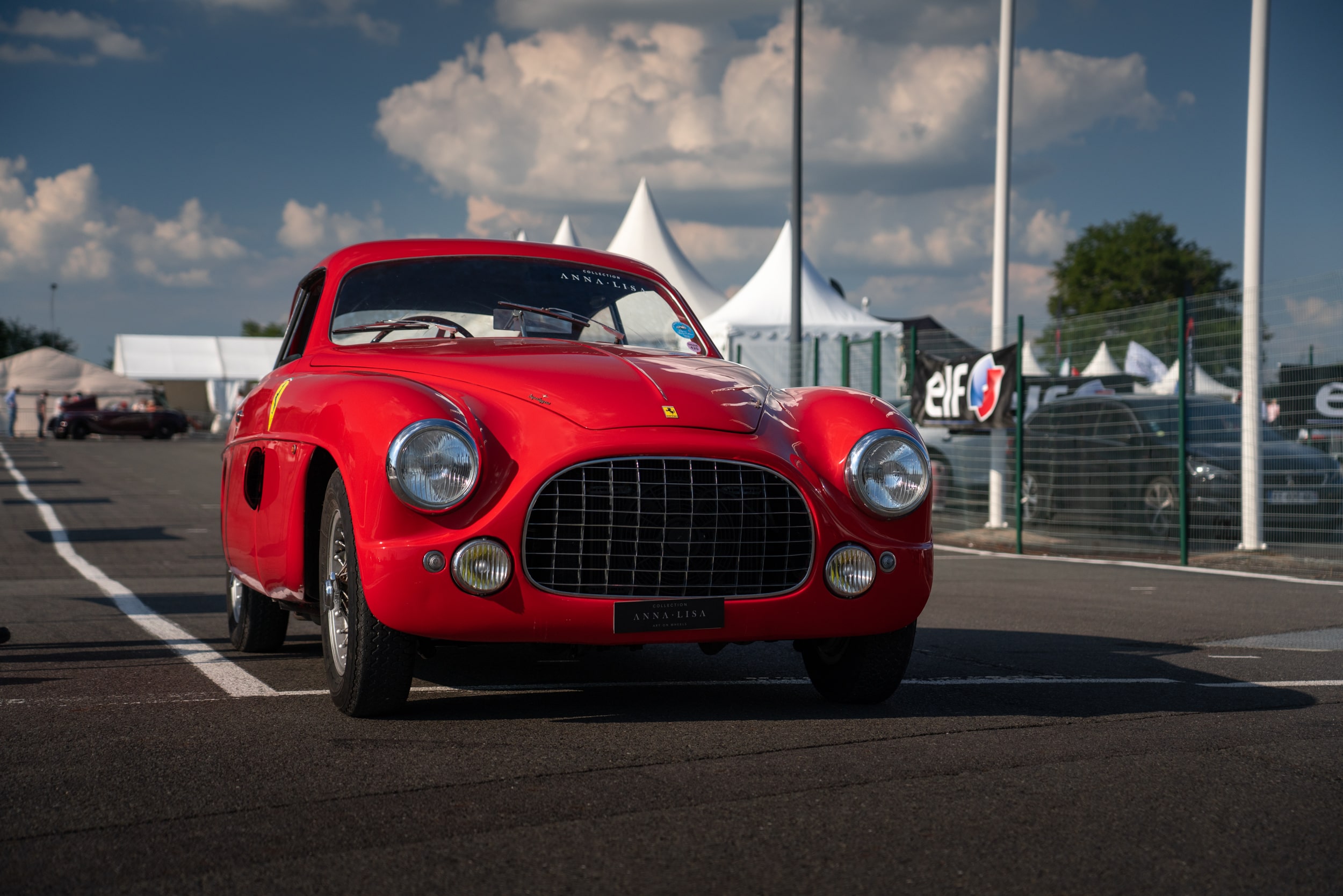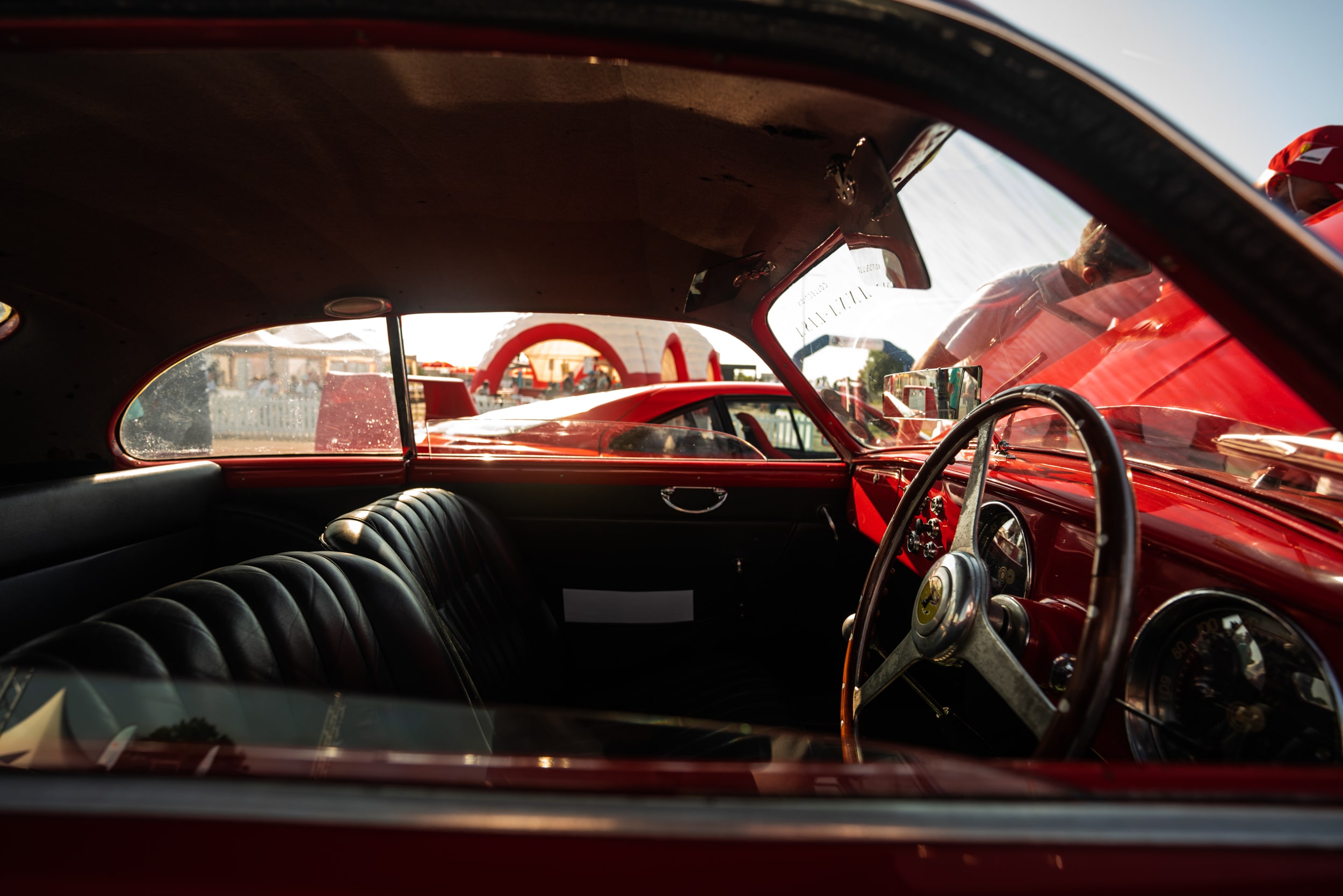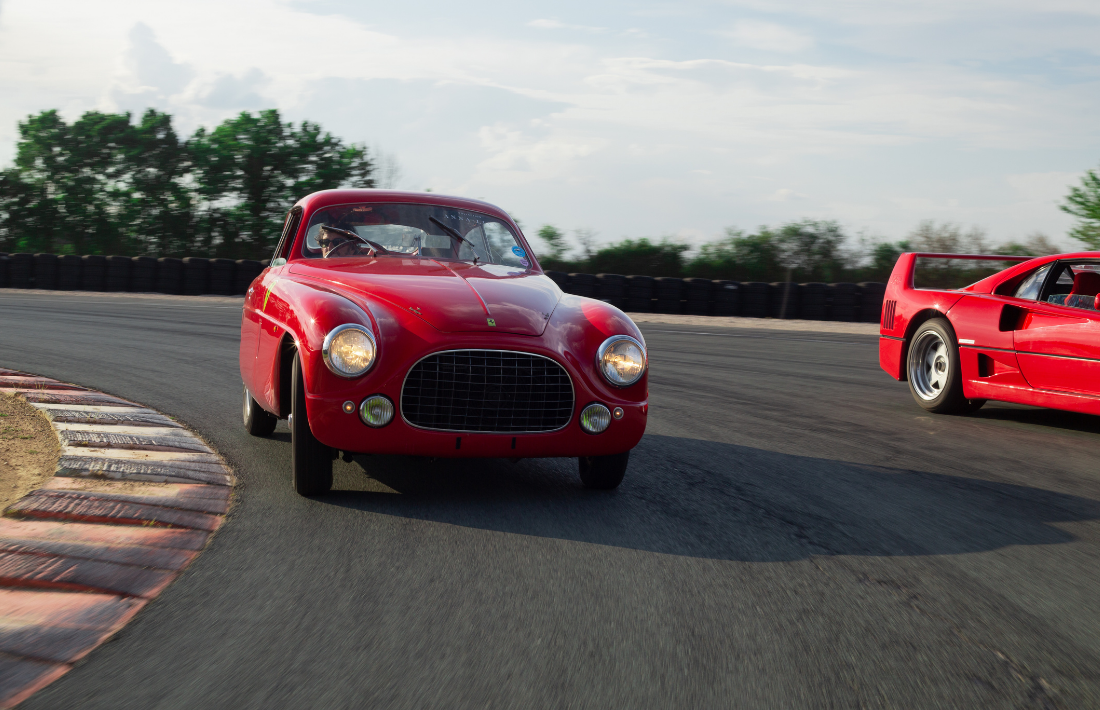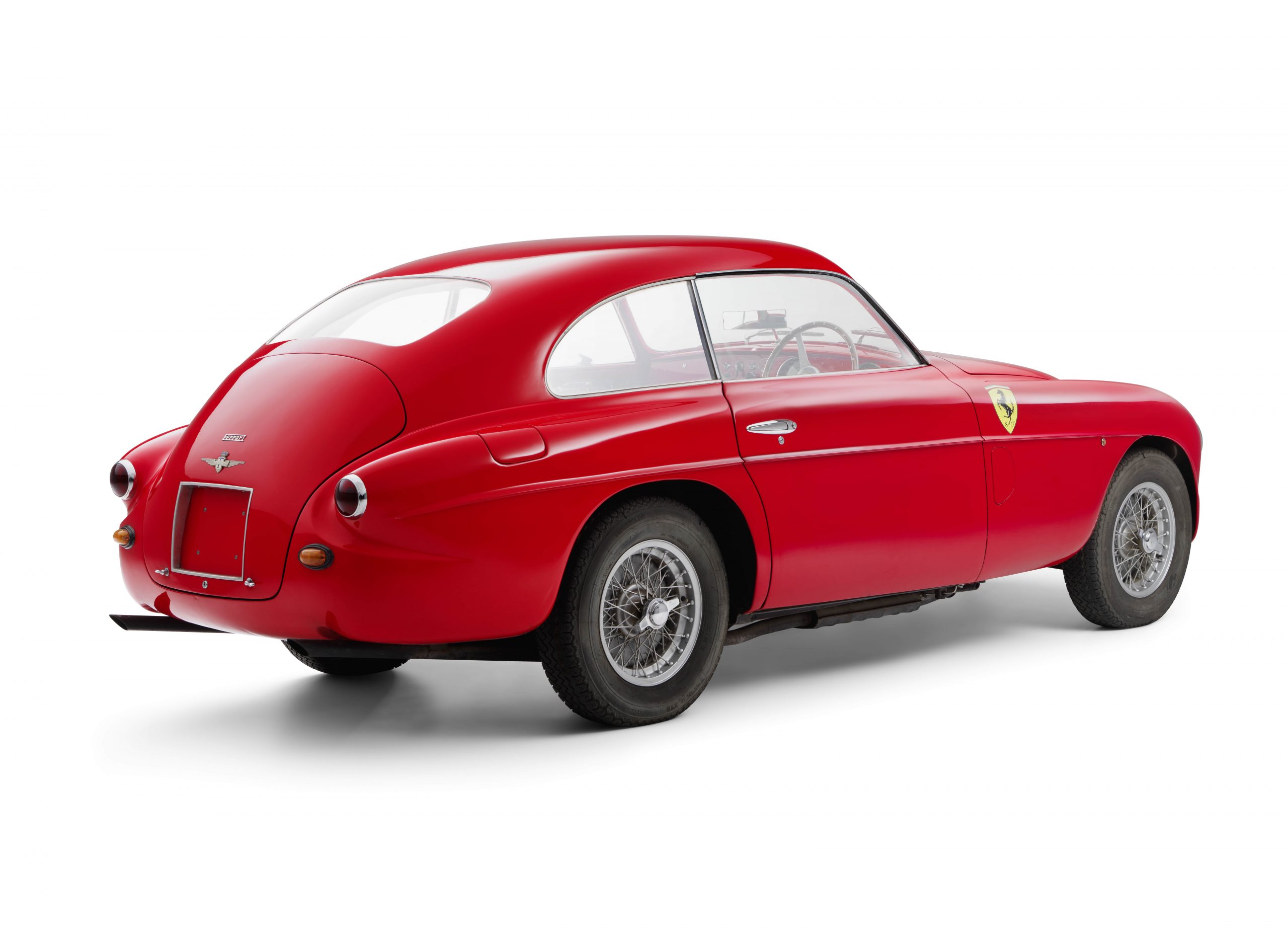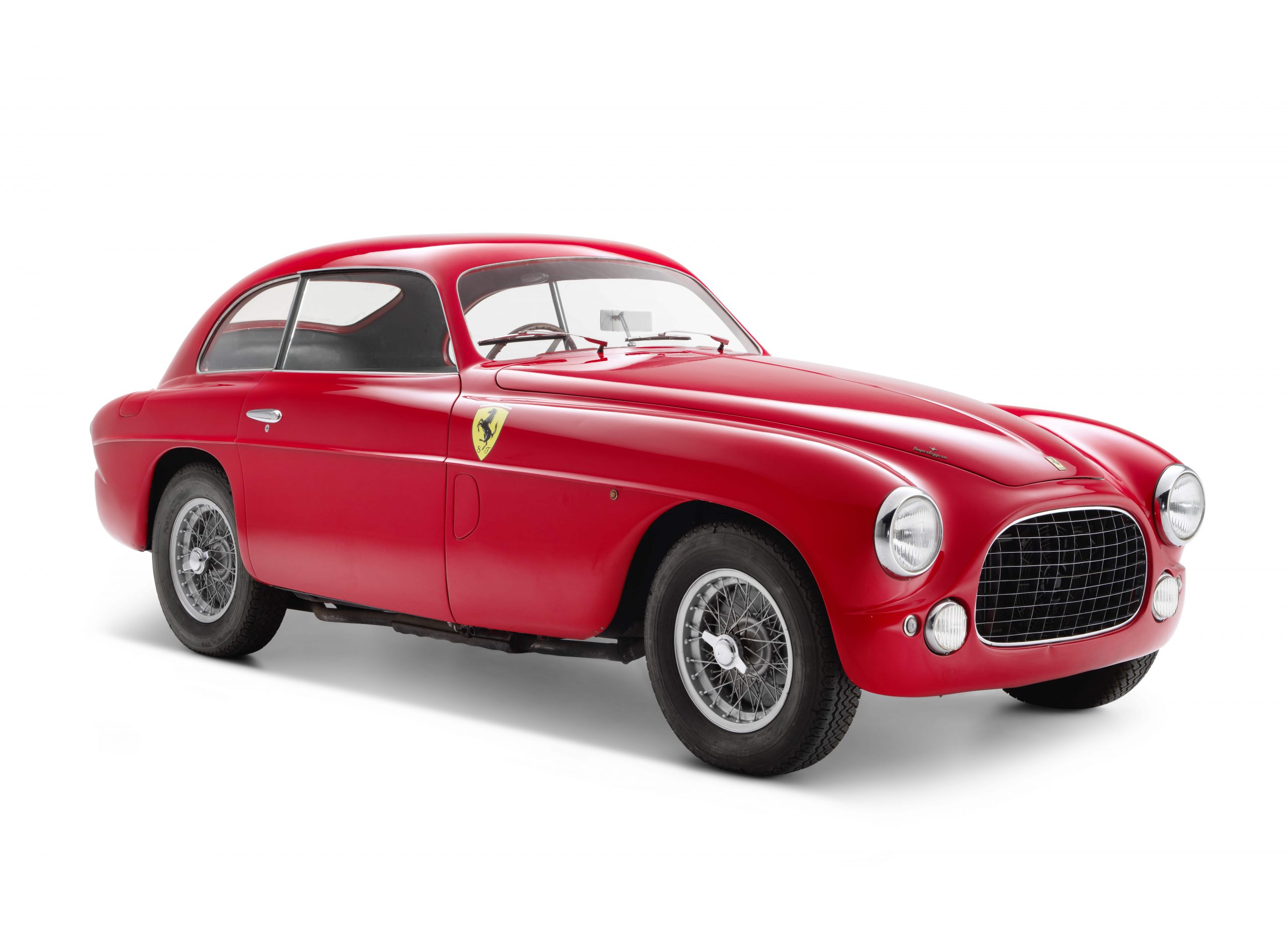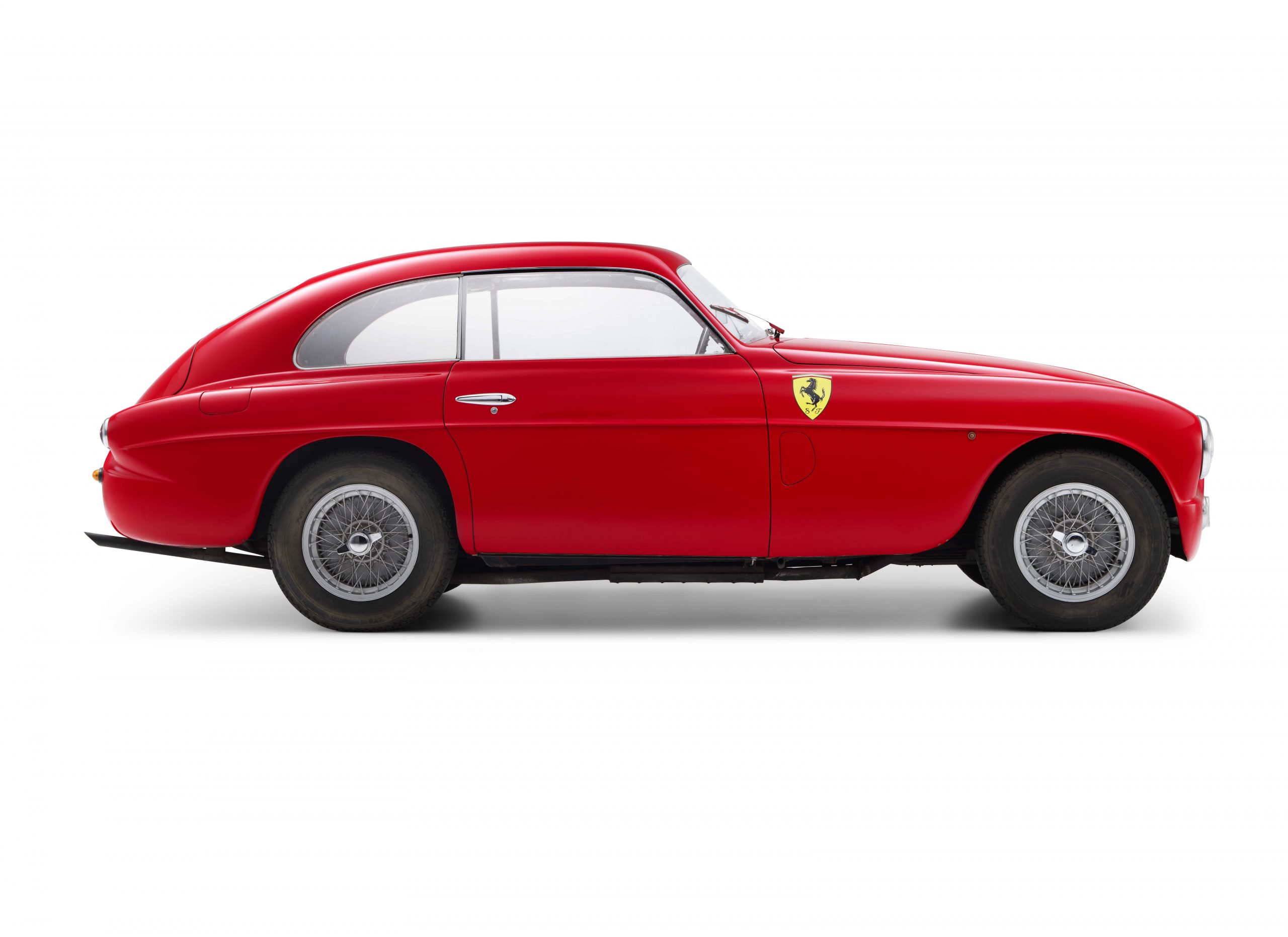Ferrari 212 Inter Touring - 1951
— The early years of Ferrari —- Model One of three Ferrari 212 Inter cars bodied by Touring using the “SuperLeggera” process
- History Our Ferrari 212 was sold new in 1951 in Montevideo
- Mechanics A very sound “matching numbers” car powered by the legendary V12 Colombo engine
- Driving Sensations A powerful car that requires constant attention, but delivers unforgettable sensations
Like its older sisters, the Ferrari 166 and 195, the Ferrari 212 has been bodied by the finest Italian coachbuilders of its times. While Vignale has been the main coachbuilder of the 212; Touring, Abbot, Ghia and Pinin Farina have manufactured 42 other cars.
“You don’t really drive a Ferrari 212 , you fight with it”
Rediscovered with great emotion after 25 years, the ANNA LISA Art On Wheels collection’ s Ferrari 212 Inter Touring is a superb testimony of what Ferraris from the early 1950s were about.
If our Ferrari is both “Matching Numbers” and sound, it has very probably been through a restoration in the early 80’s. At this time, the main goal was to drive the car, which explains why certain aesthetic criteria that are prized today were then considered secondary. It is for instance very likely that the car was not born red, that the Scuderia Ferrari badge seen on the sides were probably painted in a different colour and that bumpers first equipped the car.
In addition to an extensive historical research that is currently being carried out, our aim was to get the car back on the road and drive it. With the help of experts and Ferrari Gauduel’s team of mechanics in Lyon, we have been able to start and drive the car for the first time in May 2021, not without emotion.
Emotion is really the right word to describe our feelings when we first stepped in the Spartan yet elegant cabin with its body coloured dashboard, its large and thin steering wheel and its frail bucket type leather seats. What amazed us is how the Colombo V12 kicked in with a bang and needed to be warmed up before releasing its full power.
You really have to concentrate when driving this car as you feel the slightest bumps. You also need to truly anticipate before braking. Indeed, the drum brakes will quickly remind you how inefficient they can be after a while! Last, double-declutching is of course a must to drive this car.
Once you manage all these skills, you are then able to enjoy this car to the full and needless to say, it is up to its reputation! No matter how fast you drive, any acceleration provides you with screaming V12 sounds that are truly addictive.
This car is not only a concentrate of aesthetics and nostalgia; it is a real journey through time and space, both moving and unforgettable.
These cars are very different from the image that grand touring cars may bring in general imagination. Despite its very elegant body, the 212 Inter is much closer to the rough side of a racing car than to the refined side of cars made for concourses.
© Ugo Missana – Maxence Massaro
The early years of Ferrari
So as to finance its Scuderia’s racing challenges, Enzo Ferrari started to sale non-race cars to individuals. These cars were often racecars that had been downsized. This is what our Ferrari 212 Inter, stamped EL for “Export Lungo” was. It was a direct descendant of the 166 Inter, which was the very first Grand Touring Ferrari in history.
Whether it was the 166, 195 or 212, the Inter versions were dedicated to road use. Truth is, they were not that different from the Export versions dedicated to competition. The compact and powerful Colombo V12 engine powered both versions. One of the main differences between the Inter and the Export versions was the engine capacity: the Inter had with a single carburettor while the Export had three. The other difference is a longer wheelbase for the Inter, as it was meant to accommodate a more comfortable interior.
A total of about 105 Ferrari 212s, including 78 Inters, have been produced. The Ferrari 250 Europa launched in 1953 has later replaced the 212.
The 212 is not only a concentrate of aesthetics and nostalgia, it is a real journey through time and space, both moving and unforgettable.
An era of tailor-made sports cars
In the early 1950s, Ferrari was still very much in the hands of craftsmen and still far away from an era of standard production cars.
In these times, Ferrari was still delivering bare chassis to independent coachbuilders, which then produced cars with very different styles. In what was still mostly a made to order era, there were many differences between each car, some had a more refined interior or special bodywork, while others were returned to the factory to receive improvements for competition.
As the fastest road car of its time, the 212 Inters were sometimes used as racing cars. For the 1950 Carrera Panamericana, two Vignale-bodied 4-seater Inters finished in first and second place, greatly enhancing Ferrari’s reputation in America. As a matter of fact, our Touring-bodied Ferrari 212 Inter was exported new to Montevideo in 1951.
The Ferrari 212, a direct heir to the Ferrari 166
To fully understand the Ferrari 212, it is highly recommended to have a close look on the very first road-going Ferrari, the 166. Indeed, the 212 is truly a direct heir to the 166.
During the Second World War, Enzo Ferrari was thinking of his future. He elaborated a very ambitious racing program that was combining single-seater Grand Prix cars, sports cars and Grand Touring cars! All three cars had in common the architecture of their engine, a small displacement 60° V-12 designed by Gioacchino Colombo in 1946. This very compact unit with a low height was built in light alloy with a great power-to-weight ratio. It was to become the benchmark V12 for Ferrari for many years.
Similarly, the first Tipo 125 1.5 litre engine inaugurated the Ferrari nomenclature in which a car name is derived from the capacity of an individual cylinder (125cc). Ferrari’s Tipo 125 racing car was thus renamed Tipo 159 by mid-season 1947.
At the end of 1947, Ferrari launched its first Tipo 166 (2.0 litres) car with two engines: a 150 hp racing engine for the Export cars, and a smaller 100 hp engine with a single Weber carburettor for the Inter versions. The 166 was quite a modern car for its times with its twin-tube chassis, five-speed gearbox, independent suspension and drum brakes.
The Ferrari 212, a genuine racing car
Launched in 1950, the Ferrari Tipo 212 is the direct descendant of the 166 (and 195) with a more powerful engine. With a 150 or 170 hp engines, the 212 was able to reach high speeds close to 180 km/h, all with an exceptional road behaviour, partly thanks to its independent front suspension.
The Tipo 212 was thus one of the fastest road cars of its time. The Export versions won the Tour of Sicily, the Coppa Inter Europa at Monza, the Tourist Trophy, the Tour de France.
© Yann Geoffray – Studio Grand Sud
Touring Superleggera : the paragon of elegant bodyworks
The first collaboration between Ferrari and the “Carrozzeria Touring Superleggera” dates back to 1948, when Ferrari exhibited at the Turin Motor Show a very elegant 166 MM barchetta and a 166 coupe both designed by Touring.
Founded in 1926, the “Carrozzeria Touring Superleggera” is known all over the world for its so-called “superleggera” process, which consists of covering a frame made of thin steel tubes with aluminium sheets, thus providing an enormous weight saving compared to traditional wooden-frame bodies. The most famous manufacturers, such as Alfa Romeo, Ferrari, Lancia and Aston Martin used the “superleggera” process. More than an automotive masterpiece has been dressed this way.
Several stylistic features characterise the early Touring bodied Ferraris, the first of which is the so-called “Barchetta” style. Its name comes from the base of the bodywork, which was narrower, like on a boat, hence, the name “barchetta”. This name has since then become commonplace and is now used for any open sports car bodies, even if most of them don’t have the Touring original stylistic feature.
Another stylistic feature introduced on the Ferrari 166 by Touring was the famous rib running alongside the bodywork, which is also found on the 212.
Last but not least, the very elegant “Fastback” rear end of the 166 Touring was also taken over on the 212 and remains one of the strong aesthetical signatures of the car. If the first 166s were equipped with “Cabo Sport” wheels built by Carlo Boranni with a light alloy rim, the famous Borrani wheels with “Rudge Record” spokes have later replaced them. Our Ferrari 212 Inter benefits from this very elegant bodywork and the Borrani wheels.
The Ferrari 212 Touring from the ANNA LISA Art On Wheels collection is a true heir to the Ferrari 166 Touring Coupé. Both are reminiscent of the three 1939 Alfa Romeo 2500 SS Coupé designed by Touring, especially from the rear.
© Maxence Massaro
